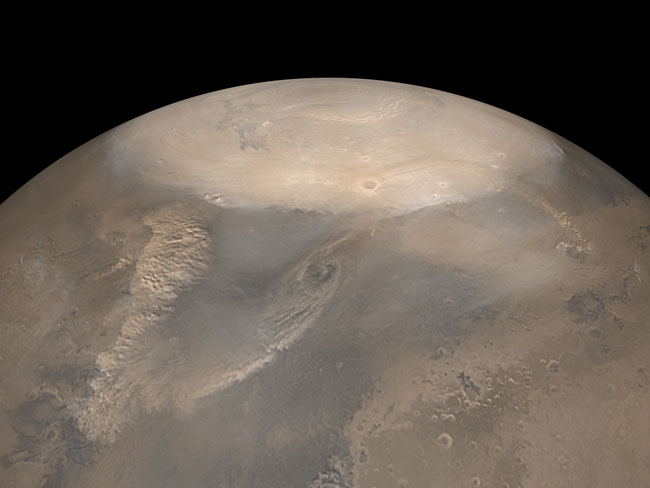Explanation: Spring reached the north pole of Mars in May, and brought with it the usual dust storms. As the north polar cap begins to thaw, a temperature difference occurs between the cold frost region and recently thawed surface, resulting in swirling winds between the adjacent regions. In the above image mosaic from the Mars Global Surveyor spacecraft currently orbiting Mars, the white material is frozen carbon dioxide that covers much of the extreme north. The choppy clouds of at least three dust storms can be identified.
1999 2000 2001 2002 2003 2004 2005 2006 2007 2008 2009 2010 2011 2012 2013 2014 2015 2016 2017 2018 2019 2020 2021 2022 2023 2024 2025 |
Yanvar' Fevral' Mart Aprel' Mai Iyun' Iyul' Avgust Sentyabr' Oktyabr' Noyabr' Dekabr' |
NASA Web Site Statements, Warnings, and Disclaimers
NASA Official: Jay Norris. Specific rights apply.
A service of: LHEA at NASA / GSFC
& Michigan Tech. U.
|
Publikacii s klyuchevymi slovami:
Mars - dust storm - Mars - pylevaya burya
Publikacii so slovami: Mars - dust storm - Mars - pylevaya burya | |
Sm. takzhe:
Vse publikacii na tu zhe temu >> | |
